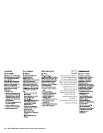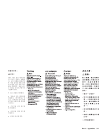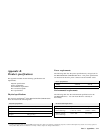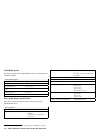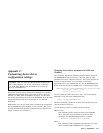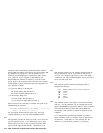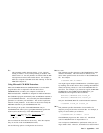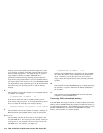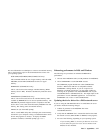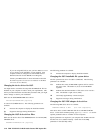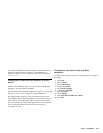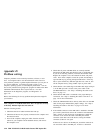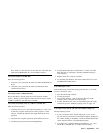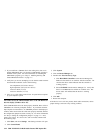memory, and too many buffer specifications might slow down
your computer or interfere with other programs that have large
memory-usage requirements. You might be able to specify a
larger number of buffers to enhance CD-ROM drive
performance without adversely affecting programs that have
large memory-usage requirements if you use expanded memory
(see the /E option in this section) or if you load MSCDEX.EXE
into high memory using instructions given in the documentation
that comes with your operating system or with the memory
manager.
/E
This parameter instructs the computer to use expanded memory,
if available. For example:
C:\MSCDEX.EXE /D:IBMCD1 /E
Note that you must first load an expanded memory device
driver before using this option. If no expanded-memory device
driver is loaded, the following error message displays:
Expanded Memory not present or not usable.
/V
This parameter instructs the computer to display a summary of
RAM allocation and expanded memory usage at startup time.
/L:drive letter
This parameter specifies the drive letter to be assigned to the
first CD-ROM drive. Do not assign a letter already used by an
existing drive or your computer will not be able to access the
CD-ROM drive. For example, you might use:
C:\MSCDEX.EXE /D:IBMCD1 /L:F
Normally, the CD-ROM drive is assigned to the next available
drive letter after devices such as diskette drives and hard disk
drives. Therefore, you use this option only if you wish to
assign a drive letter beyond the last letter previously allocated
by DOS.
/K
This parameter instructs MSCDEX.EXE to use Kanji (Japanese)
file structures, if present, rather than the default alphanumeric
file structures.
/S
This parameter instructs MSCDEX.EXE to allow networked
computers to share CD-ROM drives.
Conserving DOS conventional memory
If the CD-ROM drive-support software is loaded in DOS conventional
memory (below 640 KB RAM), there might be insufficient memory to
run some DOS applications. The CDSETUP program attempts to load
the IDE CD-ROM drive device driver and MSCDEX into upper
memory, when possible, to avoid this problem.
3-16 IBM 2X/4X/24X CD-ReWritable Internal IDE Option Kit



